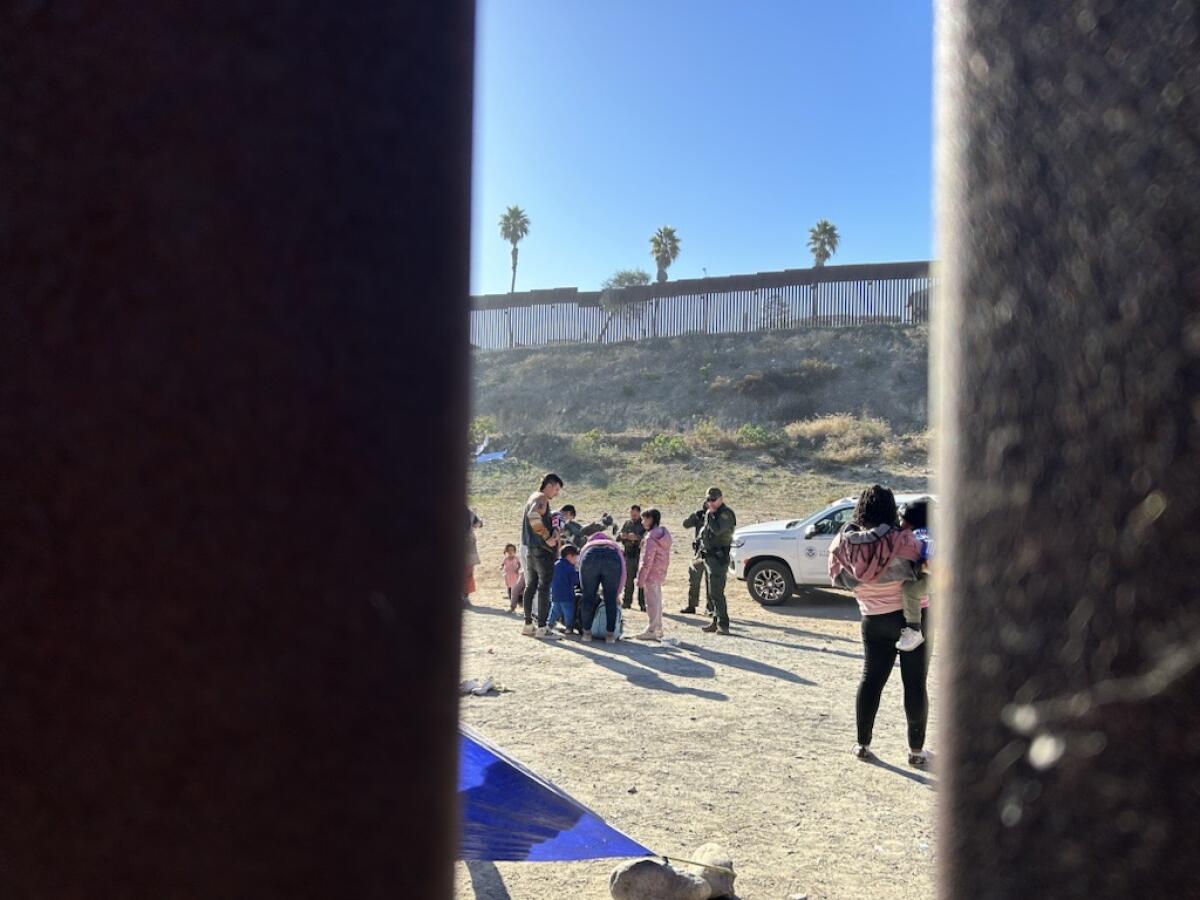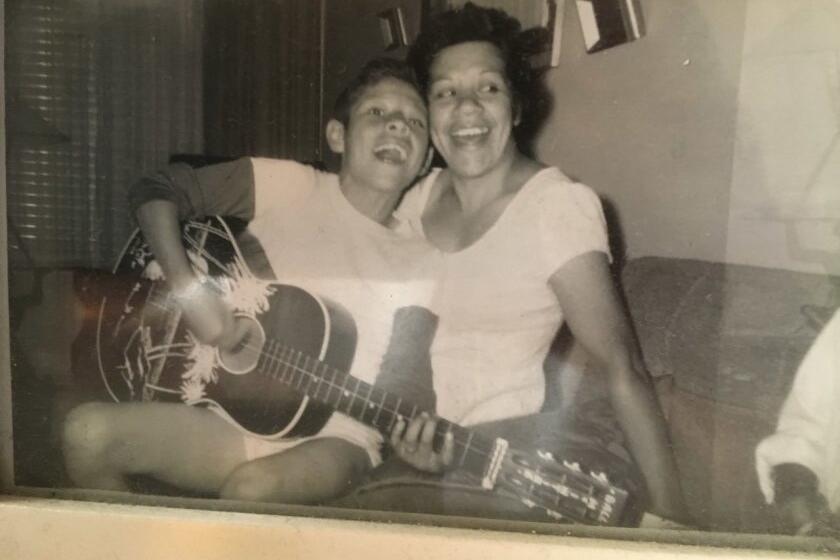Opinion: The federal government is failing migrant families being kept between the border walls

Asylum seekers are not allowed to leave and don’t have adequate access to water, food, sanitation, medical care or protection from the elements
Jasso is a human rights advocate and program coordinator for the U.S./Mexico Border Program of the American Friends Service Committee. She lives in South San Diego.
I look up to where the almost 30-foot wall meets the clear blue sky. The wall has a red dark color, and from where I stand it feels imposing, impressive. I lay my hands on its cold, rough surface. Looking between the bars, I can see another wall mirroring this one. In between the two walls is an open space of no more than 150 feet. In that open space sits a big dumpster full of trash, surrounded by several bags containing more trash. Behind the second wall, several military men are standing or walking up and down a short stretch night and day.
I have been looking at this wall every day for the last 100 days.
From the wall hang several blue tarps to protect migrants and asylum seekers from the strong sun during the day and from the cold at night. Shoelaces are used to tie the blue tarps and cardboard from the wall’s slats. Border Patrol forces asylum seekers to remove their shoelaces at first contact so that they cannot hang themselves or use them as a weapon in detention. Their shoes — with which they have journeyed across a desert, sometimes hundreds of miles, searching for safety — are rendered almost unusable within minutes of their meeting a representative of the United States.

When Border Patrol agents encounter family units at any of the entry points, they transport them to what is today known as Whiskey-8, one of the six open-air detention sites in San Diego County. Border Patrol agents order the people to stay at the site until the agency can process them. Sometimes this takes days. Asylum seekers are not allowed to leave and don’t have adequate access to water, food, sanitation, medical care or protection from the elements.
Earlier this month, seven immigrant rights organizations — including the American Friends Service Committee, where I work — lodged a federal complaint against the Department of Homeland Security for these gross violations of human rights that are inconsistent with even the agency’s own custody standards. On Dec. 20, DHS announced the department’s decision to formalize an investigation on the use of these sites. But we cannot just wait for legal action that may or may not come.
Since early September, I and other volunteers have been documenting and monitoring the agency’s treatment of people trapped between the walls. On Sept. 10 we set up a water station; for people who had been walking for several hours to cross and for those who were spending days at the open-air detention sites, water is critical. Four other stations were created for food, medical care, phone charging and clothes. For 100 days all stations have been running for up to 18 hours a day.
This community of volunteers keeps hope alive for hundreds of people arriving to this location only to be subjected to long and painful waits. It is one small way to challenge the inhumanity of the walls. The tireless and unselfish commitment of the volunteers who call this region their home is a stark contrast to the cruelty of the border wall and those who enforce it. We have no fear of welcoming new people; we want to hear their stories, to cry and to laugh as we accompany them, even with a wall between us.
If the consequences were not so devastating, it would be almost comical that thousands of miles from here our members of Congress are debating funding for even more border security and even more restrictions on asylum. Who does it protect to terrorize families? Who does it serve to invest in even more concrete and steel to isolate people who are not even allowed the dignity of shoelaces? If we want to see what actually fosters safety and security, we need look no farther than the community of people at the border doing their best to honor our shared humanity and provide for our basic human needs — food and water, but also connection and compassion.
At night when it gets dark, the wall starts losing its power. I experience the wall differently at night. It almost feels as if it disappears when I look up into the dark sky. I have become familiar with Border Patrol’s routine when dark comes, and families are dropped off to wait out in the cold. From a distance I do a count of how many women, men and children are there. I take deep breaths and in a calming voice, I greet people. Little by little, I call the new group over to come closer, to not be scared. They seemed a little hesitant at first but slowly they walk towards me.
I put my hands out to touch theirs, they search for my eyes and share a soft shy smile. I take more deep breaths holding one or two hands through the wall, then I ask, “Would you like cream and sugar with your coffee?” Their faces light up and the answer is always yes.
Get Weekend Opinion on Sundays and Reader Opinion on Mondays
Editorials, commentary and more delivered Sunday morning, and Reader Reaction on Mondays.
You may occasionally receive promotional content from the San Diego Union-Tribune.





